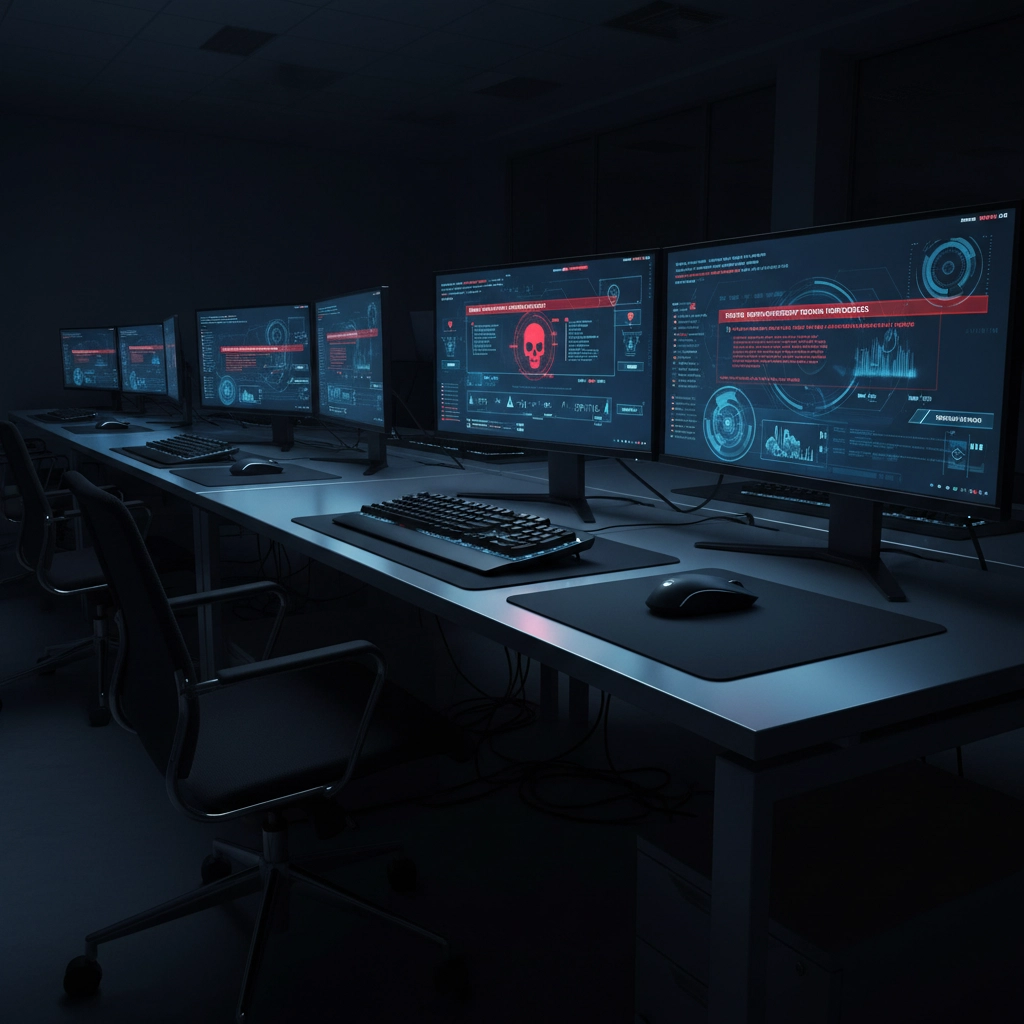G’day! If you’re still running Windows 10 in your business, we need to have a serious chat. Microsoft has dropped some pretty alarming news that could put your entire operation at risk – and unfortunately, most Aussie businesses are still sitting ducks.
Just over a week ago, on October 14th, 2025, Microsoft officially pulled the plug on Windows 10 support. That means no more security updates, no more patches, and no more protection against the nasties lurking online. But here’s the kicker – there’s already a dangerous vulnerability being actively exploited by ransomware groups, and Windows 10 users are completely defenseless.
The Perfect Storm: End of Support Meets Active Threats
Picture this: your business is like a house, and Microsoft just stopped maintaining the locks on your doors. Now imagine there are burglars actively using a master key that works on all the unmaintained locks in your neighbourhood. That’s essentially what’s happening with Windows 10 right now.
The vulnerability we’re talking about is called CVE-2025-29824, and it’s a doozy. It affects something called the Windows Common Log File System (CLFS) driver – basically a core part of how Windows operates. Hackers can use this flaw to gain complete control over your system, and they’ve been doing exactly that since at least April this year.
Meet the Bad Guys: Storm-2460 and PipeMagic Ransomware
The threat actors behind these attacks aren’t your run-of-the-mill script kiddies. We’re dealing with a sophisticated group called Storm-2460, linked to the notorious RansomEXX ransomware gang. They’ve developed a particularly nasty piece of malware called PipeMagic that’s designed specifically to exploit this Windows 10 vulnerability.
These criminals have already hit businesses across the globe – from the United States to Spain, Venezuela, and Saudi Arabia. They’re targeting industries that sound pretty familiar: IT companies, real estate firms, finance businesses, software developers, and retail operations. Sound like your industry? You should be concerned.
Why Windows 10 is Now a Sitting Duck
Here’s where things get really scary. Microsoft released patches for this vulnerability back in April 2025 – but only for Windows 11, Windows Server 2022, and Windows Server 2019. Windows 10? Still completely vulnerable. Microsoft has promised patches are coming “as soon as possible,” but that was months ago, and we’re still waiting.
This creates what we in the IT world call a “zero-day” situation – a known vulnerability with no available fix. Except in this case, it’s worse because there’s also no ongoing support to provide that fix when it eventually arrives.
The Australian Business Reality Check
If you think this won’t affect your Aussie business, think again. According to recent surveys, around 84% of businesses worldwide are still running Windows 10. That means the vast majority of Australian small and medium businesses are operating on a system that’s essentially a ransomware magnet.
Consider what this means for your business:
- Your customer data is at risk
- Your financial records could be encrypted and held hostage
- Your business operations could be shut down for weeks
- You might face regulatory penalties if customer data is compromised
- Your reputation could be permanently damaged
The costs of a ransomware attack extend far beyond just paying the ransom (which experts never recommend doing anyway). You’re looking at business downtime, data recovery efforts, legal costs, regulatory fines, and the long-term damage to customer trust.
What Makes This Particularly Dangerous
This isn’t your typical malware threat. The CVE-2025-29824 vulnerability allows attackers to start with basic user access and escalate to full system control. That means even if your staff follows good security practices and doesn’t click on dodgy links, attackers can still take complete control of your systems.
Once they’re in with full privileges, they can:
- Install ransomware across your entire network
- Steal sensitive business and customer data
- Create backdoors for future attacks
- Delete or corrupt your backups
- Monitor your business communications
The Migration Imperative: It’s Not ‘If’ But ‘When’
The writing is on the wall – Windows 10 is no longer a viable business platform. But here’s the thing: upgrading isn’t just about swapping out your operating system. It’s an opportunity to modernise your entire IT infrastructure and potentially save money in the process.
Many of our clients at Cloud Computer Company have discovered that migrating to cloud-based solutions actually costs less than maintaining traditional on-premises servers and systems. Plus, you get better security, automatic updates, and the ability to work from anywhere – something that’s become pretty important for Aussie businesses.
Your Action Plan: From Risk to Security
Immediate Steps (This Week)
First things first – you need to assess your current situation. How many Windows 10 machines are you running? What critical business functions depend on them? This isn’t something to put off until next quarter.
If you can’t upgrade immediately, you need to implement emergency protective measures:
- Isolate Windows 10 systems from your main network where possible
- Implement strict access controls and monitor user activities
- Ensure your backups are working and stored offline
- Consider temporarily restricting internet access on vulnerable machines
Short-term Planning (Next Month)
Start planning your migration strategy. This might involve upgrading to Windows 11 (if your hardware supports it), moving to cloud-based solutions, or a combination of both. Google Workspace, for example, can replace many of the functions you currently rely on Windows applications for.
Long-term Strategy (Next Quarter)
Consider this an opportunity to build a more resilient, flexible IT infrastructure. Cloud computing solutions not only solve your immediate security concerns but can also improve your business efficiency and reduce ongoing IT costs.
How Cloud Computer Company Can Help
We’ve been helping Australian businesses navigate exactly these kinds of challenges for years. We understand that technology changes can feel overwhelming, especially when they’re driven by security threats rather than business growth plans.
Our approach is simple: we make IT transitions as painless as possible. Whether you need to upgrade your existing systems, migrate to cloud solutions, or completely rethink your IT infrastructure, we’ve got you covered. We specialise in cloud migration and can often save businesses money while improving their security and functionality.
We’re not here to scare you with technical jargon or oversell you on solutions you don’t need. We’re here to help you understand your options and make the best decision for your business – whether that’s a simple upgrade or a complete digital transformation.
Don’t Wait for the Next Attack
The reality is that continuing to run Windows 10 in a business environment is now a significant liability. It’s not a matter of if your systems will be targeted, but when. Every day you wait is another day you’re rolling the dice with your business data, customer information, and operational continuity.
The good news? You don’t have to figure this out alone. At Cloud Computer Company, we’ve helped dozens of Australian businesses navigate similar transitions, and we can do the same for you.
Ready to protect your business and explore your options? Book a free IT health check with us today. We’ll assess your current setup, explain your options in plain English, and help you create a plan that fits your budget and timeline. No high-pressure sales tactics, no confusing technical jargon – just honest advice from fellow Australians who understand business.
Contact us today for your free consultation. Your future business security might just depend on it.




